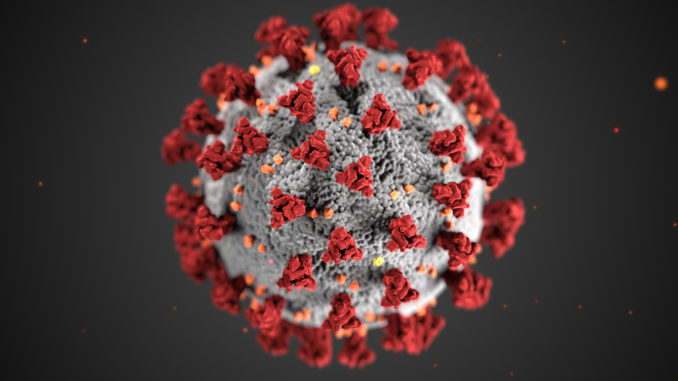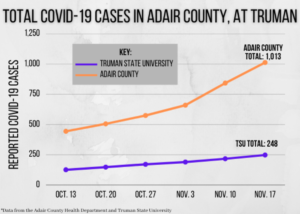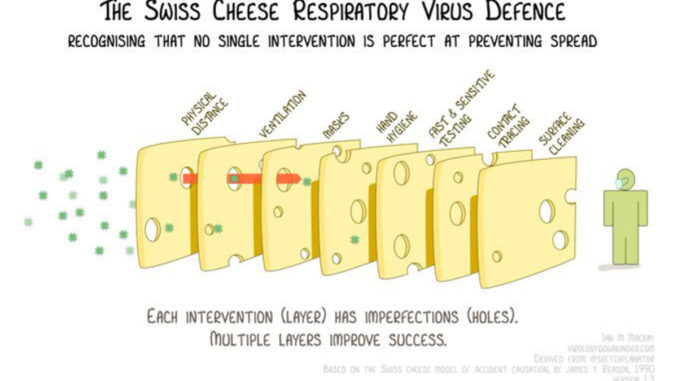
Over the past few weeks, COVID-19 cases have sharply increased in Adair County. Meanwhile, at Truman State University, cases have remained fairly steady.
As of Nov. 17, there were 168 active cases of COVID-19 and a total of 1,013 confirmed cases in Adair County. In response to this increase, the county has added two more contact tracers and is doing contact tracing all seven days of the week. The health department has completed more than 2,400 contact tracing calls.
Adair County is currently in the red zone, according to the White House Coronavirus Task Force report from Nov. 11. A red zone is an area that has reported COVID-19 test positivity rates of higher than 10%. The state of Missouri is also considered a red zone, with more than 245,000 confirmed cases.
“[This pandemic] is very serious for Adair County,” Jim LeBaron, Adair County Health Department administrator, said. “Everyone needs to protect and keep eachother safe.”
LeBaron said he encourages everyone to wear masks while in public, wash their hands and follow social distancing guidelines.
Even with the large increase of cases throughout Adair County, the amount of cases on Truman’s campus have not spiked recently. As of Nov. 17, there were 25 students and six faculty and staff members with active cases, and 217 recovered cases.
“We actually peaked like three weeks ago, and we’ve gone back down,” Scott Alberts, Faculty Senate president and member of the COVID-19 working group, said. “While we are concerned about the community, we’ve seen that the measures we’ve taken on campus have worked.”
Alberts described how Truman is using the Swiss Cheese Model, developed by Ian Mackay at the University of Queensland.
The Swiss Cheese Model, Alberts said, shows that each way to prevent COVID-19 has some holes, but when you layer them together the holes cancel out.
Right now, the COVID-19 working group is concerned about students going home for break and bringing the virus back to their families. They are encouraging students to be cautious and try to be as safe as possible.
“Our goal was to stay face to face all semester, and we’ve done it,” Alberts said. “We’re pretty excited that it worked at all. Even 15 or 20 cases is more than you want to see, but we’ve been super successful, and it’s not because my group has been sending out emails, it’s because people are doing the stuff they are supposed to.”


